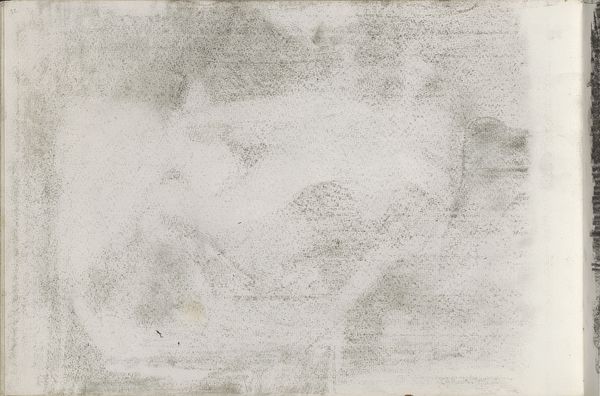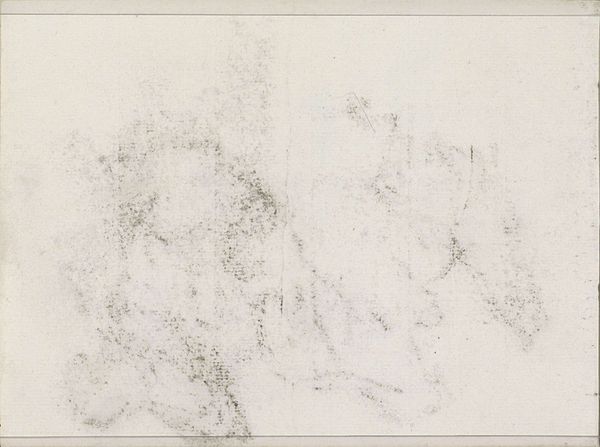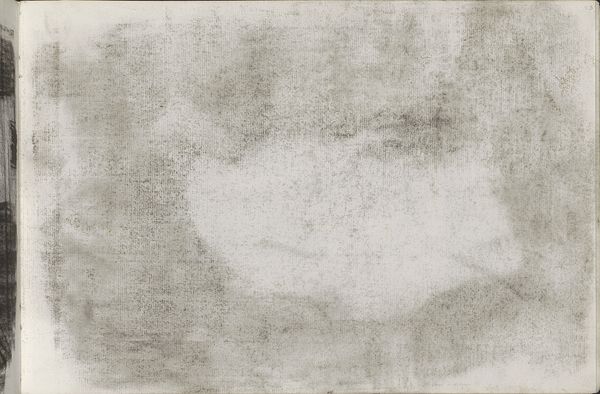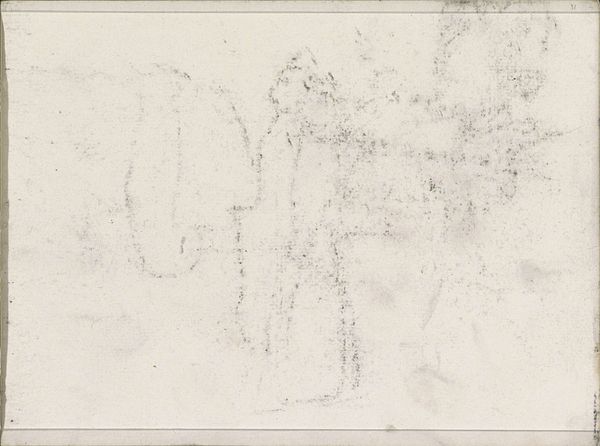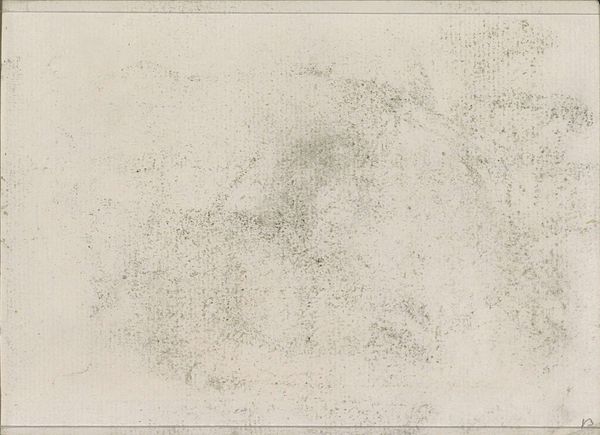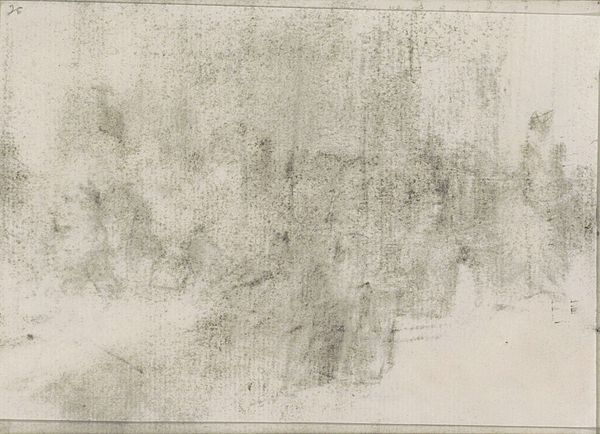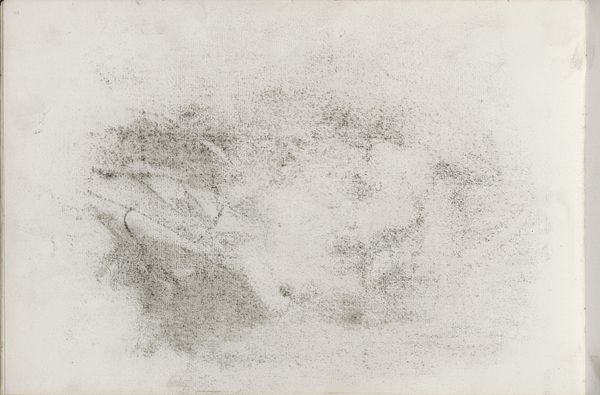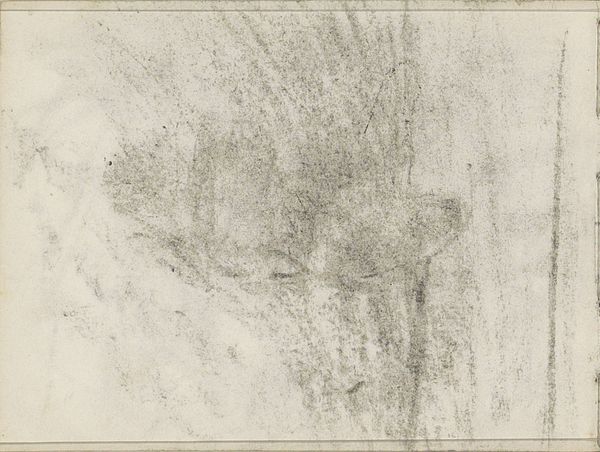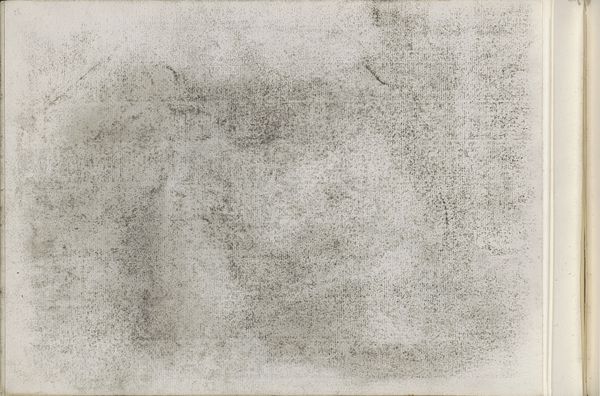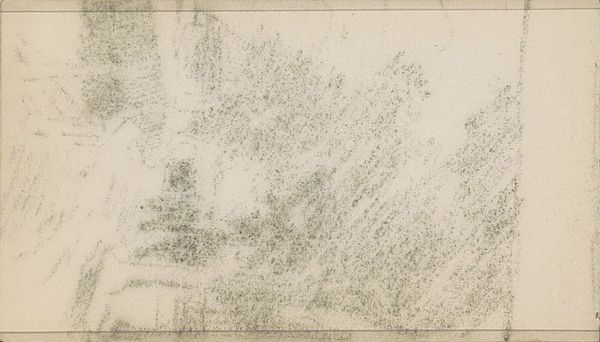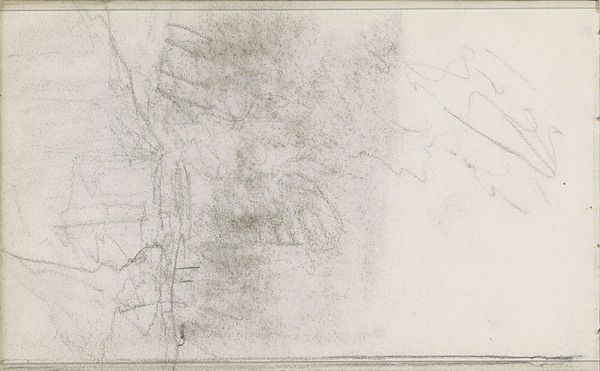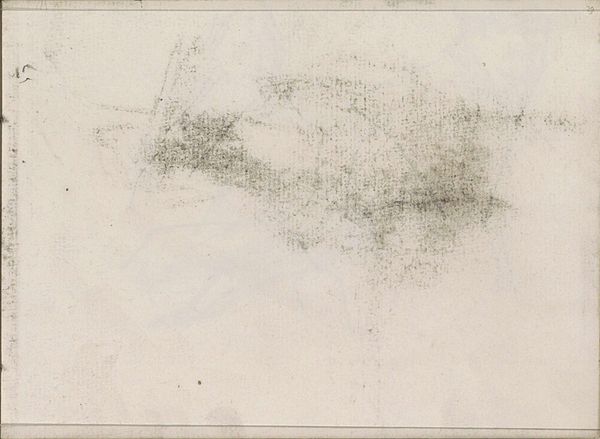
Copyright: Rijks Museum: Open Domain
Curator: Looking at this artwork by Isaac Israels, dating from around 1875 to 1934 and held at the Rijksmuseum, titled "Abklatsch van de krijttekening op blad 14 verso," one can't help but think about the process inherent in its creation. Editor: Oh, wow. It’s like looking at a ghost—so faint and fleeting. The smudges and blurred lines... feels incredibly intimate, almost accidental, as if capturing a fleeting thought. I'm strangely drawn to the softness. Curator: Exactly. The title itself, pointing to the 'rubbing' of a chalk drawing from verso page 14, speaks to the transfer and reproduction process. We see not the original drawing but an echo, prompting questions about originality and the role of reproduction in art. Editor: Interesting. I initially thought of the accidental beauty of leaving a pencil lying on paper in the sun and finding its mark traced there hours later. Does this ‘Abklatsch’ become a unique artwork distinct from the original chalk drawing simply through that act of transference, or is it always subservient to the original? Curator: I would argue that by examining it independently from the supposed ‘original’, and thinking of the act of reproduction, combined with material concerns—the qualities of the paper and pencil, and the social context that supported such explorations within impressionism, we see a unique art object, challenging that subservience you mention. The texture alone tells a story. What looks simple involves conscious labor and an artistic intentionality to convey softness using specific materials. Editor: Yes, and you make me think how easily it's overlooked, that human element, the artist's intention buried beneath layers of reproduction and fleeting impression. Still, there's something vulnerable about this sketch; maybe it's that feeling of witnessing the beginning of something, like catching an artist deep in thought as a portrait takes form. Curator: It makes one consider Israels’ choice, what they meant by archiving this copy. We should challenge our expectations around completion. I find that thinking materially invites us to recognize that decisions about production are aesthetic choices, worthy of sustained contemplation. Editor: Agreed! It certainly reframes how I perceive this ethereal image.
Comments
No comments
Be the first to comment and join the conversation on the ultimate creative platform.

